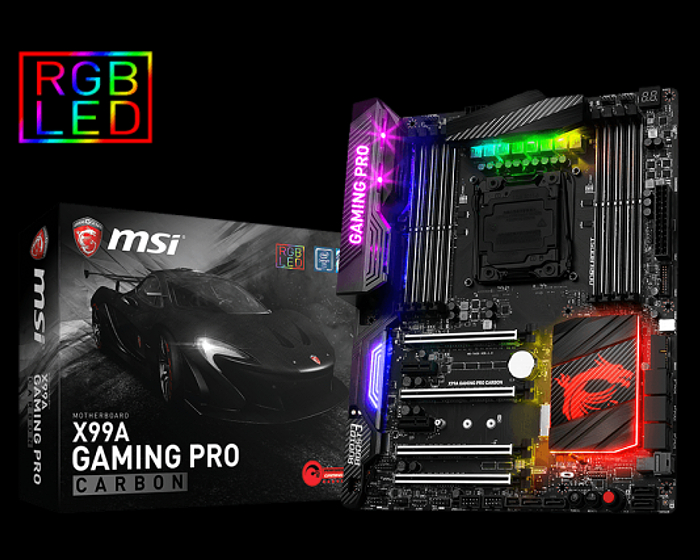
Given that this new board presumably supports Intel’s upcoming “Broadwell-E” high-end desktop processors, we’re not surprised that pricing and market availability is unknown at this point. We expect to see those details once Intel reveals its goods at the end of the month during Computex 2016.
On the lighting front, MSI’s new motherboard supports up to 16.8 million colors and provides 17 LED effects to dazzle your friends. The board also includes a dedicated pin header so that system builders can extend this lighting system to other components by way of a 4-pin RGB strip and a lighting controller. The Mystic Light app for controlling this lighting system will soon be offered for the PC, smartphone, and tablet.
According to the product page, the LED effects include breathing, wave, flashing, double flashing, meteor, lightning, and rainbow. The lighting can also be set to the desktop’s current temperature, or the user can let the system choose a random pattern. Other modes include pop, rap, jazz, play, and movie, indicating that the lighting could change based on sound.
The specs show that the new Intel X99-based motherboard has an LGA 2011-3 socket, supporting the new Intel Core i7 Extreme Edition processor. There are eight quad-channel memory slots supporting up to 128GB of DDR4 RAM at a long list of speeds; four PCI-e x16 Gen3 slots; 10 SATA 3 ports supporting RAID 0, 1, 5, and 10; one SATA Express bank; a Turbo M.2 slot; a Turbo U.2 slot, and a TPM header.
On a connectivity level, the new ATX motherboard provides four USB 3.1 ports on the front, seven USB 3.1 ports on the back, four USB 2.0 ports on the front, and four USB 2.0 ports on the back. There’s also a gigabit Ethernet port for wired networking provided by Intel, which is fine-tuned for “championship level” online and LAN-based gaming. It supposedly takes a load off the CPU so that your gaming is more fluid.
What’s interesting here is that this Ethernet port is supported by MSI’s LAN Protect technology. Essentially, it’s 15KV antisurge protection, preventing harm from lightning strikes and static electricity that could pass through the LAN cable. Users know this protection is active thanks to a red LED illuminating from inside the Ethernet port.
The sound on this motherboard is handled by the Realtek ALC1150 codec, Nahimic Sound Technology, and Audio Boost 3. The audio jacks mounted on the back are gold-plated, and the HD audio processor itself is EMI-shielded. Other audio details include an isolated audio PCB with an LED line, front dedicated headphone out pins, dual headphone amplifiers, and Chemi-Con audio capacitors.
As for other technologies, the board supports Game Boost for overclocking the processor and memory with the touch of a button, and a Gaming Hotkey for assigning specific keys on the keyboard to load overclocking profiles and games. The board also supports 3-way Nvidia SLI and AMD Crossfire GPU setups.
“This new motherboard has been built from the ground up and has a completely new design for its heavy plated heat sinks and covers, based on the latest CARBON look and feel,” the company said. “The X99A Gaming Pro Carbon is the first X99 model featuring Game Boost with 8 gears up to 5GHz of one-second-overclocking!”


